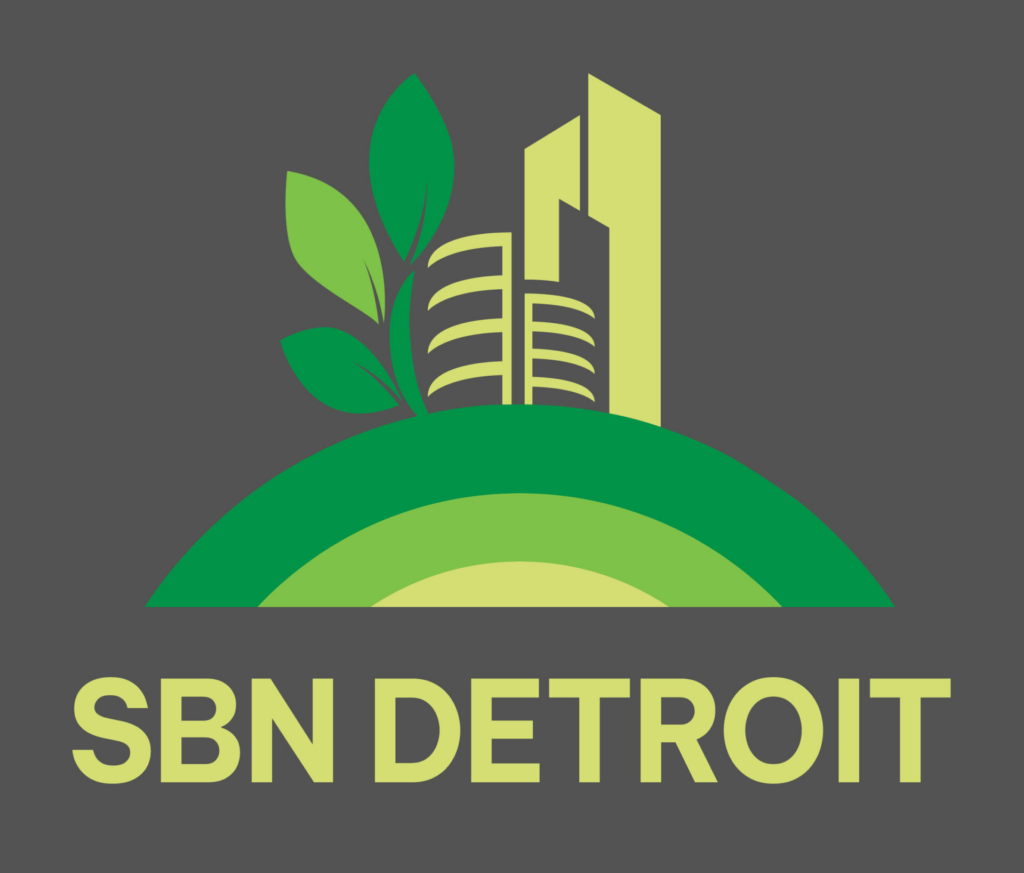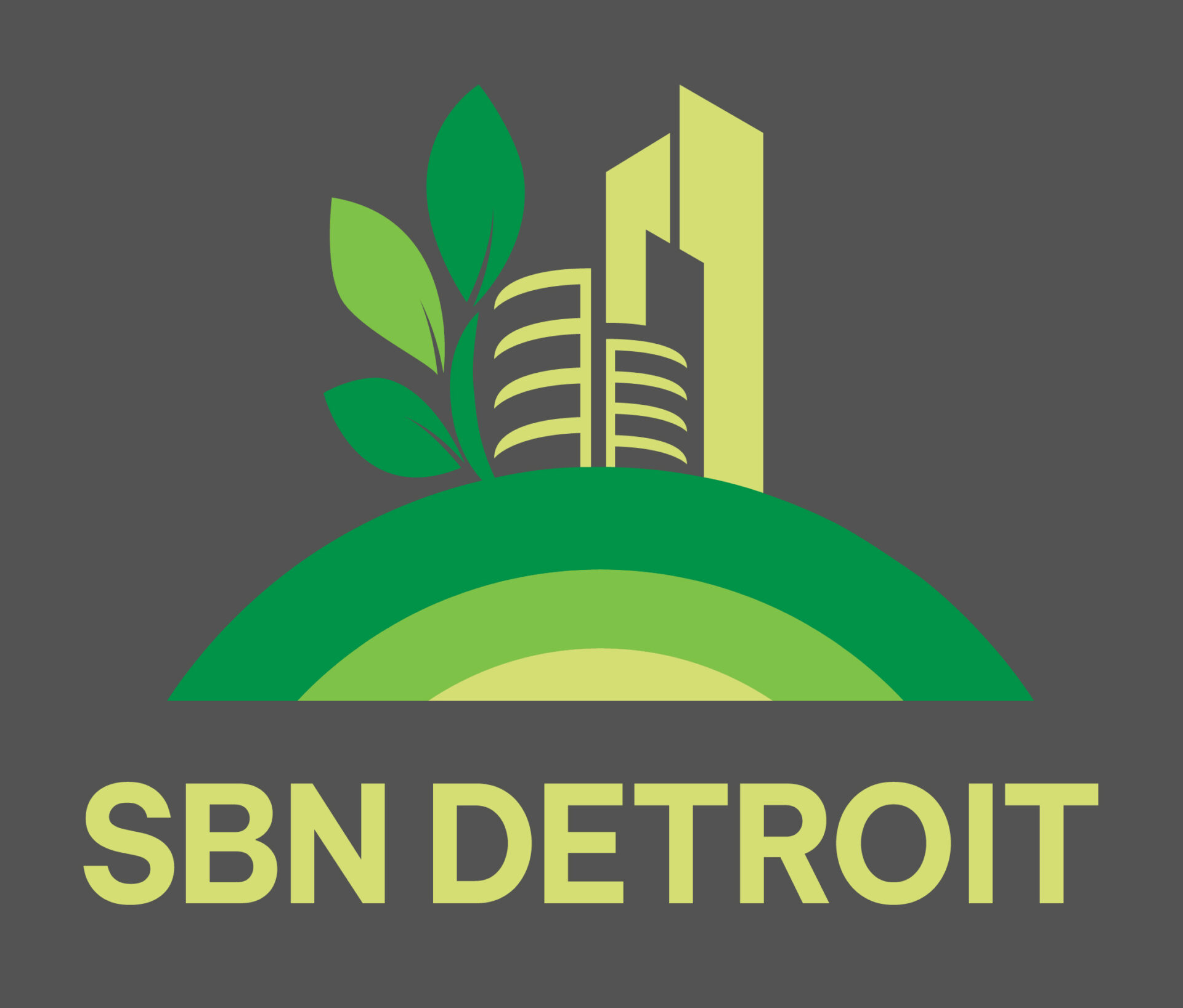EV Infrastructure Has Funding – When Will There Be Stations?

Three years ago, under the Bipartisan Infrastructure Law, Congress allocated $5 billion in federal funding to establish the National Electric Vehicle Infrastructure (NEVI) Program. This initiative aims to develop charger networks across each state to support electric vehicles (EVs). Of this funding, $110 million was earmarked for Michigan, covering the period through fiscal year 2026. However, the state has not yet seen the installation of any new power stations. As part of this effort, Red E Charging LLC – an EV infrastructure developer and charging network based in Detroit – has been awarded several NEVI contracts to install and manage in Michigan and a number of other states. SBN Detroit interviewed Red E Charging Founder Abass El-Hage about the timeline, barriers, and factors specific to Michigan regarding power station installation. Q: Since the announcement in 2021 of the $5 billion in federal funding just 11 EV stations have been installed across seven states, with none in Michigan to date. From your perspective, why is this? A: There are several reasons. First, this is a new process and it took time to get organized, generate RFPs, and kick it off. RFPs were published at the end of last year and contracts were awarded early this year. Setting up the necessary paperwork is tedious and time-consuming, and around public funds, there is just a lot of due diligence required. There are also multiple and varied requirements around bonding that can take another six months to sort out. Identifying appropriate locations for the charging stations with the right amenities on the property that’s willing to host can be time-consuming. On top of that, regardless of how long the paperwork takes, working with the utilities and getting the right equipment and resources in place can take six months to a year. It’s simply an arduous process that takes time. Q: Do the requirements vary from state to state? A: Yes. Every state is different when it comes to execution under NEVI. In Texas and New Mexico, the NEVI process is pretty straightforward, but Texas has issues with utilities that can slow things down. I would say Michigan is the middle of the road. And the biggest hurdle here is the strict bonding requirements. Not every state requires bonding, but Michigan requires a five-year bond that’s not run of the mill. Q: Outside of NEVI projects, is every state different? A: Yes. Incentives are different in every state. Utilities are different. In Michigan, we are lucky to have DTE and Consumers Energy. They have been helpful and proactive, and they facilitate a lot. EGLE (Michigan Department of Environment, Great Lakes, and Energy) and the EPA have been helpful in Michigan as well, helping to create infrastructure in off-highway locations that are still easily accessible at reasonable rates. Q: In Michigan, are the challenges different in the Upper Peninsula compared with the Lower Peninsula? A: Yes. With every project there are financials, and in the UP there are fewer people, there is less traffic, and therefore less charger usage. It’s harder to justify a project when you don’t make the money back as fast. Additionally, utilities in the Upper Peninsula impose demand charges, which are flat fees added to the electric bill. These charges can be quite substantial. When considering these costs, the financial viability of a project often becomes questionable. Q: How do you view the transition from gas to electric vehicles being understood and received by the public? A: It’s a mixed bag. I think there is still a stigma around charging and how difficult and inconvenient it could be. It’s a misconception in my opinion. I drive from Detroit to Chicago regularly and along that route, I can stop to charge just like stopping for gas. Also, I think there’s been mixed messaging to the public by the auto industry – especially here in Detroit. When there are recalls, or if an automaker commits to building x amount of EVs and then scales back, this sends mixed signals to the public. Q: How many contracts in Michigan has Red E Charging been awarded and what is the status? A: We’ve been awarded 12 NEVI contracts all over the state and an additional 60 fast charger projects across the state for EGLE and utilities. As I explained, the paperwork along with bonding requirements plus environmental approvals, site checks, and more make this a slow process. But we have notice to proceed and are moving forward with the first few now, so these will be underway. The actual installation takes just about two weeks. We were also awarded a project outside of NEVI with the City of Detroit to install public-facing chargers throughout the city. Q: Michigan aims to have enough infrastructure for 2 million EVs on the roads by 2030. Do you think this is possible? A: Yes, I think it can happen. DTE and Consumers Energy are very helpful when it comes to single-family and multifamily homes. It’s cost-effective to have a charger at your home. That drive from Chicago to Detroit I talked about … I think by the end of the year there will be chargers every 20 miles or so, eliminating any planning needed because people will feel confident they can stop whenever they need a charge. I think in the near future the logistics involved in an EV experience will be no different than driving a gas-powered vehicle. It’s just a different thing fueling the car. Be sure to subscribe to our newsletter for regular updates on sustainable business practices in and around Detroit.
Using Data to Create a Greener Bottom Line

Established in 2022 in Detroit by William Crane, OrbAid is dedicated to – in his words – helping companies build greener bottom lines. The company sells AI-based project management software that provides data and recommends actions to help companies prioritize projects that increase profits and environmental impact. SBND interviewed Crane about the current landscape for businesses navigating sustainability projects. Q: What are some of the biggest challenges you see businesses facing when it comes to sustainability? A: There are a number of challenges and some macro trends that stand out. When we look at the largest publicly traded businesses globally, they’ve made public commitments when it comes to their sustainability goals, and have included these in their SEC Filings. Many, if not most, of these companies have a significant gap between their goals and their current progress. The effort required to close this gap is substantial and poses a considerable challenge in itself. Second is the continuous improvement aspect and the time and resources this involves. For example, a company may have a goal to decrease emissions by 10% year over year for the next ten years. Planning for its longevity is a challenge. Automotive suppliers are under significant pressure. One of our customers, Prism Plastics, is particularly challenged by increasingly stringent customer sustainability requirements, and suppliers don’t have a long runway to become compliant. Further, with new government regulations taking effect in the EU and US, companies can face extreme fines and there are rigorous legal ramifications. Both customers and governments are shifting their sustainability expectations from pollution reporting to business greening. Often, companies have sustainability teams composed of employees who are already filling other roles, making it a part-time effort at best. These teams might generate ten ideas for green projects when, realistically, they need 10,000. Also, the sequencing and prioritization of projects is a challenge. Determining the most efficient and effective projects and initiatives to put into place – and in what order – is necessary to be able to sustain continuous improvement. Q: Sequencing of projects – what does this mean exactly and how does that play into a company’s sustainability planning? A: Companies have the best intentions of course, but taking on projects in a strategic order will help to remain profitable. For example, a global manufacturing company might decide to put solar panels on all of their factories across the country or the world. That is not a bad thing, but maybe that project is more expensive and has a longer payback than switching select supplier disposable cardboard boxes to returnable metal racks. Sustainability is a long game, and as I said, most large companies have continuous improvement demands year over year, so it’s about strategically sequencing the projects to remain profitable while meeting goals. Technology can help here. Leaning into AI to sort out the sequencing can be a game changer. Q: Where are companies most often missing opportunities to be more sustainable and increase profits? A: The practical and actionable stuff. There is so much pressure surrounding sustainability. It’s been politicized. There is consumer angst around it. There are stringent government regulations as I mentioned. And people naturally go to extremes. It’s back to the idea of large global manufacturers putting solar panels on all of their factories around the world. This is an enormous and expensive project. Not to say that’s not something they should do at some point, but perhaps first, companies can look at creating less trash, using less water, and converting to different materials in their manufacturing. By doing these things they can save time and money and help the environment. It’s a matter of prioritizing projects and not just throwing a Hail Mary and hoping things work out. There are a number of very practical projects that can be taken on and absorbed that in the end will help businesses be more profitable – and keep them profitable along the way. We’ve been able to help many companies in this way, including GM, Prism Plastics, Berkshire Hathaway, and more. Q: Are these hurdles changing over time? Evolving? A: Yes, when it comes to sustainability things are always evolving. We continue to face changes in regulation. I think 2025 will be an inflection point. If companies don’t comply with regulations the fines will be astronomical. Also, the science and the jargon can be confusing. But consumers are more educated than ever before and also more demanding when it comes to their sustainability expectations of companies. Q: What are some examples of sustainability projects for businesses that you have seen increase profitability? A: Product packaging is a big one. Take appliance companies like Whirlpool. Historically, an appliance gets delivered to a home and you are left with a lot of cardboard and styrofoam. Switching to renewable materials can translate to savings. We are seeing some really creative innovations in packaging materials like fungus-based inserts that are organic and naturally break down. Q: How do you think AI can impact local businesses in terms of sustainability? A: AI is an efficient tool. It can be used to quickly – yet deeply tailor actionable profitable sustainability projects that deliver results. It can be used to calculate the environmental impact and business profit to get better, faster results. Be sure to subscribe to our newsletter for regular updates on sustainable business practices in and around Detroit.
Accelerating Solar Through Connecting Contractors
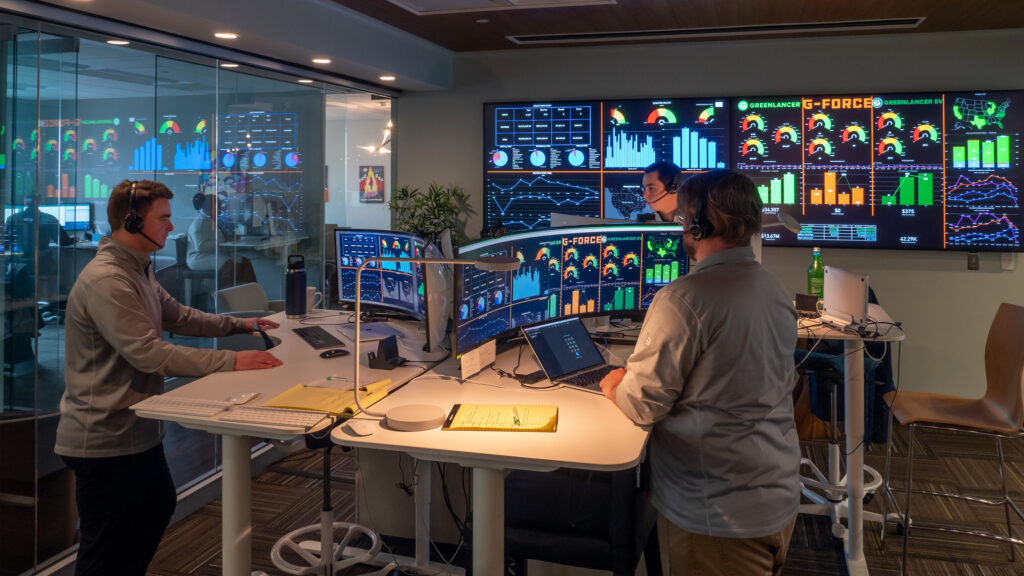
Established in 2013 in Detroit by Patrick McCabe, GreenLancer is dedicated to accelerating the adoption of solar energy and EV usage. The company’s software platform is designed to connect solar installers with design and engineering partners while guiding the permitting process, making it easier and faster for contractors to do their work. SBND interviewed McCabe about the current landscape for contractors in the industry. Q: What inspired the creation of GreenLancer? A: Following my graduation as a mechanical engineer, I moved to California and began working for a solar company. It became evident to me over time that there was a significant gap between contractors eager to install solar systems and the availability of engineering and design services to support them. Upon returning to Michigan, I founded GreenLancer with the vision of creating a platform where contractors could easily connect with engineers and designers, effectively bridging this gap. Today, GreenLancer is dedicated to advancing the adoption of clean energy and EV infrastructure, contributing to sustainability efforts not only in Southeast Michigan but nationwide. Q: Could you explain GreenLancer’s core function? A: GreenLancer operates as a marketplace that links contractors with engineering and design firms, streamlining processes to accelerate the installation of solar energy and EV charging stations. Since our inception in 2013, we’ve assisted over 7,500 contractors on more than 200,000 clean energy projects nationwide, totaling over $2.5 billion in solar energy and EV infrastructure investments. Q: Those are big numbers. Can you tell us more about how those numbers are achieved? A: We work as an online marketplace – akin to Amazon. The software connects contractors globally to design firms and engineers globally 24/7, so we can connect hundreds – even thousands – daily who then can move into the project phase. If you do the math, GreenLancer has been in existence for 11.5 years, so this equates to the support of approximately 48 projects per day being executed around the world. Q: What challenges do contractors typically face in the solar and EV sectors? A: The solar and EV charging industries pose unique challenges since they are so new. Many contractors lack the specialized knowledge and resources required for these installations, often necessitating costly engagements with engineering firms. Additionally, navigating the diverse and complex permitting processes across different states can be overwhelming. Issues related to utility interconnections further complicate PV installations, potentially causing delays and increased costs. These factors frequently deter contractors from entering the solar and EV markets altogether. Q: What impact does this have on the economy? A: Simplifying the complexities of permitting and engineering enables clean energy contractors to scale their operations, thus enhancing the economy. It also expands access to green technologies for both businesses and residents. Q: Your website mentions incorporating concepts from lean manufacturing in the automotive industry. Can you elaborate on this? A: As a Detroit-based company, we’ve adopted the automotive industry’s assembly line approach in a virtual capacity, optimizing our marketplace operations for efficiency and scalability. We also embrace concepts of continuous improvement methodologies and lean manufacturing used in the automotive industry to evolve alongside the needs of our users, enhancing our technology and service offerings over time. Q: How do drones factor into the solar industry? A: Drone use by solar companies has increased dramatically in recent years for residential, commercial, and utility-scale projects. Drones can save time, increase worker safety, and help pinpoint maintenance issues. In fact, many contractors are now using drones to gather data for solar site surveys, inspections, and marketing images. Several drone software companies specifically cater to the solar energy industry. Q: Solar farms are controversial in many places, including Michigan, mainly over questions of land use. What are sustainable practices for solar farm installation that can help mitigate the environmental and community impact? A: It’s helpful to consider the community and environmental impact of solar farms from the planning stage to ensure they provide the most benefit possible to the community. However, some practices are difficult or costly to implement at certain locations. It’s best to avoid constructing solar farms on undisturbed natural areas in ecologically sensitive areas. Therefore, using already cleared land usually has less impact on wildlife and is often more cost-effective. It’s helpful to keep some existing vegetation that doesn’t shade the array and to minimize soil disturbance during construction whenever possible. Some solar farm developers are experimenting with wildlife-friendly fencing around solar farms that allows wildlife to pass seasonally or is high enough to allow small animals to pass underneath. Another option, if space allows, is to create vegetative buffers along the fence line for wildlife habitat. Planting native wildflowers can reduce the need for mowing, promote biodiversity, and encourage pollinator populations. This can benefit nearby farmers because pollinators are essential for many crops. Some solar farms use sheep as an alternative to mowing to manage vegetation growth, reducing the need for mechanical mowing equipment. This approach typically involves partnering with local ranchers. Q: This is an expanding industry – is the size of the labor force keeping pace? What are the qualifications needed to get started? A: The solar power, energy storage, and EV charging industries need many skills to expand. The 2024 Electriciation Contractor Survey highlights some issues related to the labor force for solar, energy storage, and EV charging station contractors. The report found that 49% of contractors surveyed report a lack of experience and industry-specific knowledge as a challenge for hiring qualified professionals, particularly electricians and field technicians. Transitioning to clean energy is boosting the demand for licensed electricians. According to the Bureau of Labor Statistics (BLS), the demand for electricians is expected to increase by 6%-9% from 2022 to 2026. In addition, the North American Board of Certified Energy Practitioners (NABCEP) Certification helps launch a career in the solar industry. Various training programs are offered by trade schools, community colleges, universities, and nonprofit organizations designed to advance the clean energy industry. Be sure to subscribe to our newsletter for regular updates on sustainable business practices in
Changing the Chemistry of Plastics
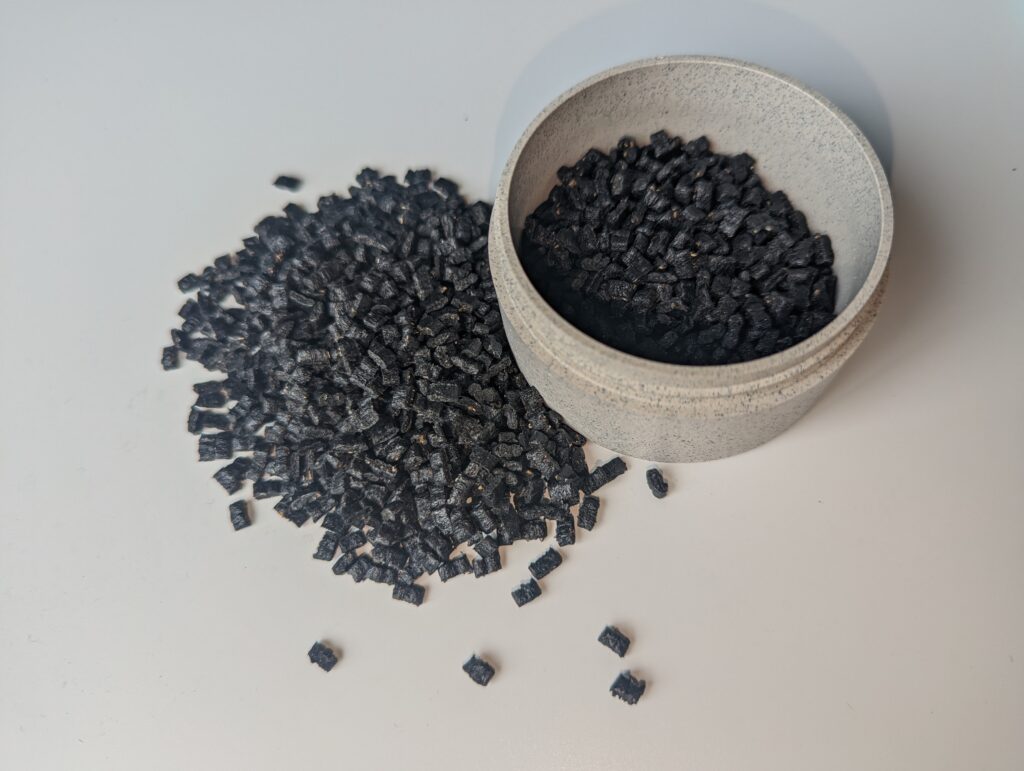
For the last four years, Heartland – a Detroit-based company founded by Tim Almond – has been working to perfect a natural fiber product it calls Imperium that replaces synthetic materials in plastic, helping to reduce the carbon footprint of plastic by up to 50%. This natural material is hemp fiber, and the company has partnered with farmers in Michigan and across the Midwest to integrate it into their existing crop rotations, which then can increase profits for the farmers, and enhance the soil. With funding from BASF business incubator Chemovator’s Elevate program, Heartland is commercially producing the product and is ready to deploy it in the reusable packaging industry, followed by the automotive and construction industries. SBN Detroit talked to Almond about the product and its impact on sustainability. Q: Tell us about Heartland. A: Heartland is a material science company based in Detroit that leverages natural fibers to help companies reduce their carbon footprint while solving the challenges of the big three sustainability missions – environment, social, and economic, without compromising product performance. The fun part is that on the product side, we get to work with the local farming community to increase their revenue per acre and increase soil health as we help manufacturing groups make better products that are better for the environment. Heartland was born out of a passion for problem-solving and sustainability. Q: How exactly do you impact and work with the farming community in terms of sustainability? A: The farming community is going through a very difficult time right now. The two major crops in Michigan, corn and soybean, are seeing a tight income situation because the value of the crops is low but the cost of chemicals and seeds is high. Profit for farmers is all but nonexistent. Hemp fiber production is a great rotational crop within corn and soybean and drives premium income per acre while improving the soil through micronutrients. The third most popular crop in Michigan is wheat, and here, we are capitalizing on underutilized land. Typically, this land sits empty from midsummer to spring, but hemp fiber grows quickly so they can grow a crop after the wheat has been harvested. We are seeing organic matter improvements in soil and aeration which lead to better production of future crops. We truly believe hemp fiber could be a staple crop in Michigan and across the U.S. Q: How many farms in Michigan are involved today? A: We work with ten or so farms in Michigan and several other states. Q: What is the process of developing the Imperium product? A: Hemp fiber is planted densely and grows to be eight to 12 feet tall. It is then cut down and treated so it’s protected from the high temperature of plastic manufacturing. Once it gets in the plastic it looks and functions exactly like plastic. So essentially the Imperium product line is made from one ingredient – hemp fiber. In the future, there are opportunities to use other natural fibers that could add value to the plastics and rubber used in the manufacturing space. Q: How do Imperium products mix with plastic to create a better end product? A: Imperium is not a finished product, it is an ingredient in the final product, being plastic. Much like making a cake, you use flour, sugar, baking powder, etc. So in making plastic, there are materials added that when combined, make the final product. Today, ingredients such as glass fiber and impact modifiers are used, as are other materials that increase the plastic’s carbon footprint. Imperium replaces large portions of the bad products with natural fiber. We can shave off 30% to 40% of the product’s carbon footprint by swapping some ingredients. It’s like eliminating sugar from your cake recipe but still enjoying the sweet flavor. Q: How did your team achieve the development of and engineering behind the products? A: A lot of failure. Trial and error. It took time to figure out what works. In many cases, the fact that we did not have the proper resources and funding gave us time and space to get it right. If we had funding three years ago, we probably would have purchased the wrong equipment. So we had to be creative with our processes, and we finally landed on a method that works with extreme efficiency. Q: Where are products deployed commercially and in what industries? A: We are commercially able to produce master batch technology for three areas of the marketplace – automotive, construction, and reusable packaging. For the auto market, think exterior components, car handles, and roof racks. Reusable packaging is our bread and butter. This consists of bins, totes, and pallets – things used to move materials in a warehouse. We are working with about 100 groups on the product development now. In the reusable packaging space, we are in the final stages of integrating into their commercial lines. These lines move hundreds of millions of pounds so it’s a meticulous process to implement. The auto industry involves a three to five-year lifecycle, but we do have an opportunity for next year’s product model. This is undefined as of today though. In the construction industry, we are in the middle stages of creating opportunities. Q: What global brands are you working with? A: Some are confidential at this time. But we work heavily with BASF and their Ultramid B Nylon 6 product, which is on every vehicle in the world. There is an opportunity for tremendous growth. Q: Creating partnerships with larger companies appears to be one strategy that you have. How does that work and do companies have equity stakes? A: In the chemical marketplace there are producers and processors who work with distributors as partners to expand sales capacity. We are taking a similar approach in that regard. Q: How is Heartland supported by BASF Chemovator? A: The investment came from Chemovator which is BASF’s incubation and seed funding arm, and with their venture capital investments
Tony Reames Returns to U-M to Lead SEAS Detroit Sustainability Clinic
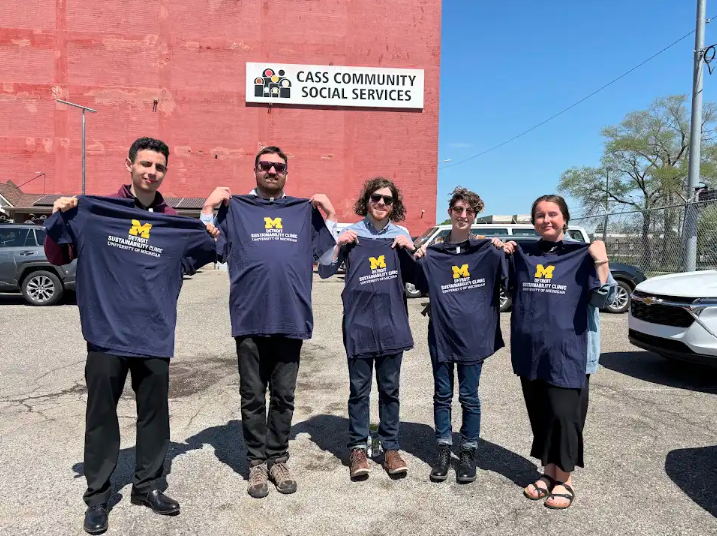
For two-plus years, Dr. Tony G. Reames was a Biden-Harris Administration presidential appointee, working in energy justice. Most recently he served as the Principal Deputy Director for the Office of State and Community Energy Programs at the U.S. Department of Energy (DOE). Now, he returns to the University of Michigan – where had worked as a research fellow – becoming the Tishman Professor of Environmental Justice and serving as the new Director of the School for Environment and Sustainability (SEAS) Detroit Sustainability Clinic. Through support from the Kresge Foundation, the clinic was founded in 2021 to build long-term capacity and partnership in Detroit, and to connect residents, nonprofit organizations, businesses, and city government to its resources. Reames sat down with SBN Detroit to discuss this new role, the work of the clinic, and how it involves and impacts businesses in Southeast Michigan. Q: What is the impetus behind the clinic? A: The Detroit Sustainability Clinic came into existence based on the recognition that the several faculty in the School for Environment and Sustainability had projects with community-based organizations, government, and business partners in the city that we were approaching in silos. Operating together as a clinic allows us to more cohesively engage with community partners and approach these projects in a more efficient and effective way. Our mission is to be a hub for advancing sustainability and climate action in an equitable and just way. We want to foster long-term relationships with community-based organizations, local governments, and businesses in Detroit to support their sustainability and climate efforts from ideation to implementation. Q: What differentiates the work the clinic does from that of other national or local initiatives in the space? A: We want to be both additive and complementary. Also, what is unique about what we provide is that we can bring the full resources of the university to support sustainability and climate action in communities, centered on equity and justice. We have the opportunity to not only use our research and data but to also boost capacity for community-driven efforts through our students and faculty. Q: How does sustainability feature in the work the clinic does? A: Sustainability for me is recognizing the social, environmental, and economic impacts of the current climate crisis and how we use the research, teaching, and other resources of the University in deep collaboration with our community partners to support a community’s long-term existence. It’s the triple bottom line. We bring these aspects together to help communities with solutions-driven planning and implementation Q: Given the focus on Detroit communities, how does the Detroit Sustainability Action Agenda feature in the work the clinic is doing? A: I participated in planning efforts to develop the city’s Sustainability Action Agenda and Climate Strategy and the Detroit Climate Action Plan. These plans are the foundation for the areas of focus for the clinic. The Detroit Office of Sustainability is a clinic partner, and we have funding to work with the city to implement its climate strategy and Blight to Beauty Initiative. Supporting local sustainability and climate action is the core of what we do. As the clinic expands, I look forward to working with other local governments in Southeast Michigan to create and implement their sustainability and climate action plans. Q: How do you plan to involve and work with businesses in Detroit? A: I’ve been working with folks in Detroit for about ten years and the ingenuity in this city stands out. I’ve spent a good amount of time with entrepreneurs and start-ups that are working on new technology and other ways to help households operate more sustainably. I see the clinic acting as a conduit between businesses that have these technical solutions and communities that need these solutions. As a university, we also have this amazing opportunity to develop the next generation of the sustainability and climate workforce. Q: How do you think that impacts businesses in Southeast Michigan? A: I believe that exposing students to real-world challenges makes them better employees for the business and organizations they’ll go to work for. And I think that students who get involved with businesses and projects in Detroit are more likely to remain in Detroit and continue working here post-graduation. I’ve seen it happen. Once a student is exposed to the issues and opportunities here and has made a professional connection, they are more likely to join the workforce locally versus moving out of state. Q: What is the role of businesses in the community work you do? A: Both residents and businesses make up a community so it’s all interconnected. Businesses support residential neighborhoods and vice-versa, so our approach is place-based, taking into account how the community operates and interacts as a whole. Also, when we think about the growth in different sectors in Southeast Michigan such as landscape architects focused on natural solutions to flooding, engineers working on the next iteration of mobility that eliminates pollution, or those developing a future where all housing is affordable and net zero energy, there is an ecosystem that must connect our greatest challenges to resources and solutions. And that is happening here. Businesses that can tap into this ecosystem and be a part of it will be the most successful businesses going forward. Q: How do you think you can help develop and support this ecosystem in your new role? A: I recently spent 2.5 years at the U.S. Department of Energy focused on designing federal programs with equity and justice at the core, and that’s one of the reasons I’m excited to move forward in this role. We have an unprecedented opportunity to move the needle on this. Businesses now have to focus on equity in order to access much of the current federal and state funding, and they have to meaningfully engage with the community as well. This is an exciting time! We are all starting to speak the same language. I’m optimistic, because I believe the way businesses, communities, and government are now addressing sustainability and
The Cleanup Club: Working to Mitigate Plastic Pollution in the Great Lakes
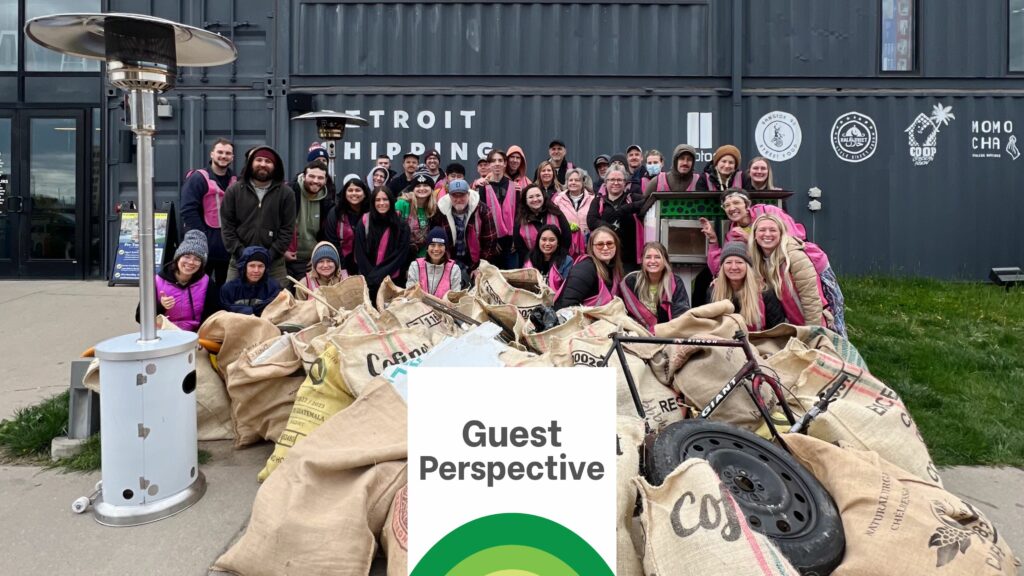
HANNAH TIZEDES IS THE FOUNDER AND EXECUTIVE DIRECTOR OF THE CLEANUP CLUB Before founding The Cleanup Club, a nonprofit dedicated to protecting our communities and Great Lakes from plastic pollution through cleanups and creativity, I amassed a collection of over 100,000 pieces of plastic debris from the Great Lakes shorelines during solo cleanups. I used the colorful found objects to create thought-provoking art pieces and installations to inspire conversations about how we can all play a role in protecting the places we love. Creativity has continued to play a key role in The Cleanup Club’s mission to protect our communities and Great Lakes from plastic pollution while having fun. We aim to serve as an approachable source to help educate and spark dialogue with people online and in person about the urgent need for action to protect our freshwater resources. In 2016, a study from the Rochester Institute of Technology revealed that nearly 22 million pounds of plastic pollution enter our Great Lakes every year, with major cities such as Detroit, Chicago, and Toronto being primary sources. By 2024, plastic production has continued to increase globally, and so has the urgent need to protect our waterways from harmful impacts. This is particularly crucial as these bodies of water provide drinking water to over 40 million people across the US and Canada. Recent studies have shown that topics such as climate change and plastic pollution often leave people feeling frightened and negative. With the rise of terms like “eco-anxiety” and studies emphasizing the growing harms of plastic pollution, The Cleanup Club aims to push forward crucial work for a more sustainable future and cleaner waters. At the same time, we strive to create an uplifting community that empowers individuals, communities, and businesses to take action together through joyful and collaborative experiences. We understand that working together is essential when it comes to finding upstream solutions and mitigating plastic pollution in our region. This is why The Cleanup Club values collaborating with aligned local businesses and global brands. We aim to educate and expand the conversation about Great Lakes plastic pollution through community cleanups, educational programming, and interactive creative projects around Michigan, focusing on Southeast Michigan. When partnering with The Cleanup Club, local businesses enjoy the benefit of a passionate group of volunteers cleaning up their neighborhoods while driving awareness and business to their unique offerings. Past partners, contributors, and sponsors include Walking Lightly and 86 Plastic (local zero waste stores in Metro Detroit), Dessert Oasis Coffee Roasters, HiBAR, Detroit Shipping Co, Belle Isle Conservancy, Royal Oak Sustainability, and more. Community events are not only fun ways to get outside and take part in collective action but also serve as a way to collect data on top-polluting items and top-polluted areas for advocacy and research efforts that further promote upstream solutions. While we acknowledge that cleanups are not the ultimate solution, we strongly believe they play an accessible and active role in education and advancing our collaborative efforts for a brighter, more sustainable future for people and the planet. Learn more at www.thecleanupclub.org and follow on Instagram at @the.cleanup.club. Be sure to subscribe to our newsletter for regular updates on sustainable business practices in and around Detroit.
Demand, Support for Sustainable Events Boosts Schupan Business Unit

Wixom-based Schupan began in 1968 as a six-person scrap metal recycler. Today, the company has 600 employees and offers multiple services related to metals and plastic, including recycling, fabrication, and materials trading. Schupan also provides sustainable events planning – planning, managing, and executing sustainable efforts for sporting events, festivals, conferences, and businesses, among others. Jessica Loding, Schupan’s chief sustainability officer and director of events, said this segment of the industry is growing as more businesses and organizations seek assistance in creating more sustainable events. SBN Detroit interviewed Loding about her work in this area and the industry trends. Q: Schupan was incorporated in 1968. Give us a little background about the company and how it’s evolved. A: Schupan started as a metal recycling company in Kalamazoo and has grown to handle beverage container recycling nationwide. We also broker materials internationally, have a multimillion-dollar inventory of aluminum and plastic parts that we sell to manufacturers, help manage the disposition of electronics, and offer sustainable event management services. Q: How has recycling evolved through the years in your experience? A: The industry has grown vastly over the last couple of decades as more and more people and businesses realize the benefits of recycling, from the perspective of climate change and the creation of the circular economy. As technology has developed and end markets for commodities have expanded, the industry has realized substantial growth to the benefit of all parties. Q: Tell us more about your Sustainable Event Management Services. A: Schupan was an early adopter of these services, and only a dozen or so companies specialize in event recycling. We support various events, including music festivals, art fairs, conferences, sporting events, casinos, hotels, community events, and business events. Q: Why do you think businesses should adopt sustainable events? A: Consumers expect companies to operate with a focus on the environment, their carbon footprint, and their recycling efforts. So, companies that embrace sustainability can have a more meaningful engagement with customers. Entities and businesses that go above and beyond to create new ways of thinking and acting around sustainability can develop a great brand story. We have partnered with some to pioneer some really interesting new recycling techniques. Q: What is an example of this? A: We worked with Dow last year and its Great Lakes Bay Invitational to develop golf tees from the plastic mesh fencing used at the venue. We partnered with Evolve Golf, Bull Engineered Products, and KW Plastics to turn the mesh into pellets and then mold the pellets into tees. Q: What are the biggest challenges that businesses face when it comes to sustainable event planning and management? A: The first challenge is the economics. It takes money, and budgets don’t always allow for the cash flow needed. They often rely on sponsorship money to provide funding and advance the programs. The second is the availability of services. They need to locate labor, have resources to support the efforts, find a waste hauler, and more, but that takes time and effort and can be a challenge. Q: Are you seeing more companies wanting this service? A: Yes, we’ve seen a large increase in inquiries for services over the last couple of years, especially since the pandemic. I think it made people more aware. We are now receiving more calls than we are making on the business development side, which is nice to see. Q: How has sustainable event management evolved over the time Schupan has been involved in it? A: Sustainable event management used to be called event recycling. It focused on bottles, cans, and food waste. Now, it encompasses much more. It goes beyond waste reduction to calculating the carbon footprint, identifying carbon reductions, water conservation planning, and community integration. It’s exciting to see how it’s grown. Q: What are the most impactful things businesses can do to make an event more sustainable? A: Any event can include basic recycling to divert items from landfills. Events, in general, have huge economic value—bringing local and out-of-town people into the community to dine, shop, and spend time is important. Q: What trends are you seeing with the businesses you work with? A: More and more events are aligning with corporate sponsors, a great way for businesses to get involved and gain recognition. This is a big shift. Corporations want to align with sustainability programming with public facing. It’s a nice shift. Be sure to subscribe to our newsletter for regular updates on sustainable business practices in and around Detroit.
The Greening of Detroit: Working to Create Healthy Urban Communities Through Trees, Education, and Jobs
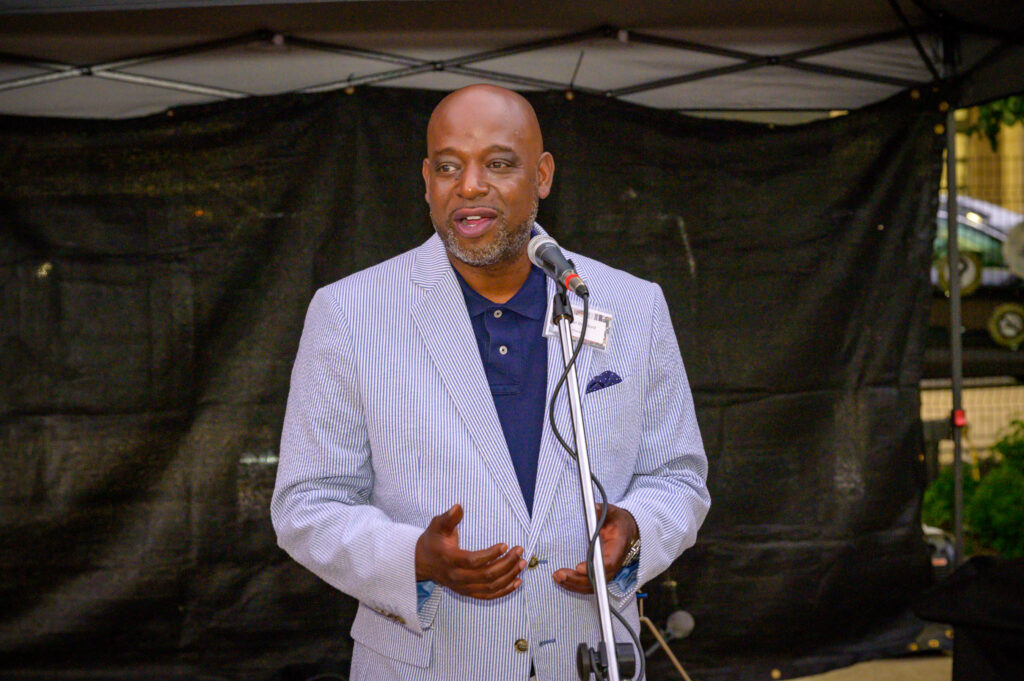
Established in 1989, The Greening of Detroit is a nonprofit organization with a mission to inspire sustainable growth of a healthy urban community through trees, green spaces, healthy living, education, and job opportunities. To date, it has planted 147,000 trees and trained more than 1,000 people through its five-year-old workforce development program. Putting trees in the ground is job one for the organization, but it also is involved in stormwater management and providing landscaping services to residents and businesses in the communities they serve. President Lionel Bradford has been with the nonprofit since 2010 and is proud of its 35-year history. SBN Detroit interviewed Bradford about the organization’s programs, impact, and future. Q: What was the impetus to begin The Greening of Detroit? A: For years Detroit was known as the Paris of the Midwest, partly because of the tree canopy cover the city used to have. Between 1950 and 1980 Detroit lost over a half million trees due to Dutch Elm Disease, urbanization, and neglect due to financial struggles. In 1989, The Greening of Detroit was founded to reforest the city of Detroit. Since its inception, 147,000 trees have been planted throughout the city. We also started a youth employment program as a way to educate and take care of these trees. Our Green Corps Summer Youth program at its height employed 200 high school students. That number decreased due to COVID-19, but it’s coming back up. In a nutshell, our organization has two main pillars: workforce development and green infrastructure. Q: What are you currently working on in terms of tree planting? A: We are in the third year of a five-year strategic plan where we are looking to plant 20,000 trees throughout Detroit, Hamtramck, and Highland Park, and train 300 individuals who have barriers to employment. This plan fits into a larger initiative we are involved in called the Detroit Tree Equity Partnership. This is a collaboration with American Forest, DTE Energy, and the City of Detroit in which we are planning to plant 75,000 trees over the next five years. There is a buzz in the city right now in terms of trees. We’ve done a lot of engagement and outreach. Recently we conducted a 500-tree giveaway, and there were still cars lined up after we gave away the last tree. It’s great to see this. Q: What is your involvement with the Walter Meyers Nursery? A: Walter Meyers is a tree nursery on 72 acres in Rouge Park that for years went untouched. In 2004, The Greening of Detroit – with the city’s permission – took over managing that property to serve as a training ground for our adult workforce development. We have used it as an outdoor classroom setting. In 2017, we put together a master plan to turn it back into a working nursery operation. As an organization, we are looking for ways to generate revenue for our training programs and to plant our trees. We want to control our destiny and cut down the carbon footprint involved in having trees shipped in. We have planted over 4,000 trees in the nursery and harvested our first 200 trees last year. The goal is to get to a point where we are selling 5,000 trees annually to municipalities, the City of Detroit, and the community. Q: What sustainable impact do you think this brings? A: In addition to creating green infrastructure in the city, community engagement is at the heart of what we do. Our job is to get trees in the ground, but we do not want to impose our will. We want to be invited into communities. Not only do we want residents to have a say, but we also want them to be a part of the work. This is a model that speaks volumes in terms of sustainability, and it’s held up across the state and the country. Q: How does The Greening of Detroit impact businesses? A: We engage and work with business owners in the communities we are involved in. Many of them bring us in to green their properties. The more green space we can add for businesses, the more it helps aesthetics and foot traffic. Green space and economic development go hand in hand. Also, from an economic standpoint, our education program puts people into jobs doing work around the city, which enhances the economic viability of Detroit as well. Q: In what other ways does the organization create green infrastructure in the city? A: Stormwater management. We have installed three major bioretention ponds around the city that hold up to a million gallons of water. These are in Rouge Park, Chandler Park, and Eliza Howell Parks. We also work with residents and businesses to replace impervious surfaces with green infrastructure through our Land + Water WORKS Coalition. Q: You have an adult workforce program from which over 1,000 Detroiters have graduated in the past five years. How does this work? A: This is a six-week program called the Detroit Conservation Corps. Sixty percent of those who have graduated were previously incarcerated. We are passionate about helping that population get credentials and secure jobs that pay decent wages. We work with a network of businesses looking to employ, most from the tree care and landscaping industries. These companies work in tandem with our advisory committee to help us build our curriculum and help with job placement. We have hired a small percentage of our trainees ourselves. Q: What is the future of The Greening of Detroit? A: Community engagement will always be a focus. We also are rebuilding our environmental education. These programs fell by the wayside before and during COVID-19, but we are working to get into schools, facilitate field trips, and educate our youth. We truly believe that getting the Meyers Nursery operations up and running is key for us moving forward. It will be important for us to generate our revenue. I’m proud we’ve been able to sustain the organization for 35
As Recycling Grows, So Does the Need for New Strategies, Technology
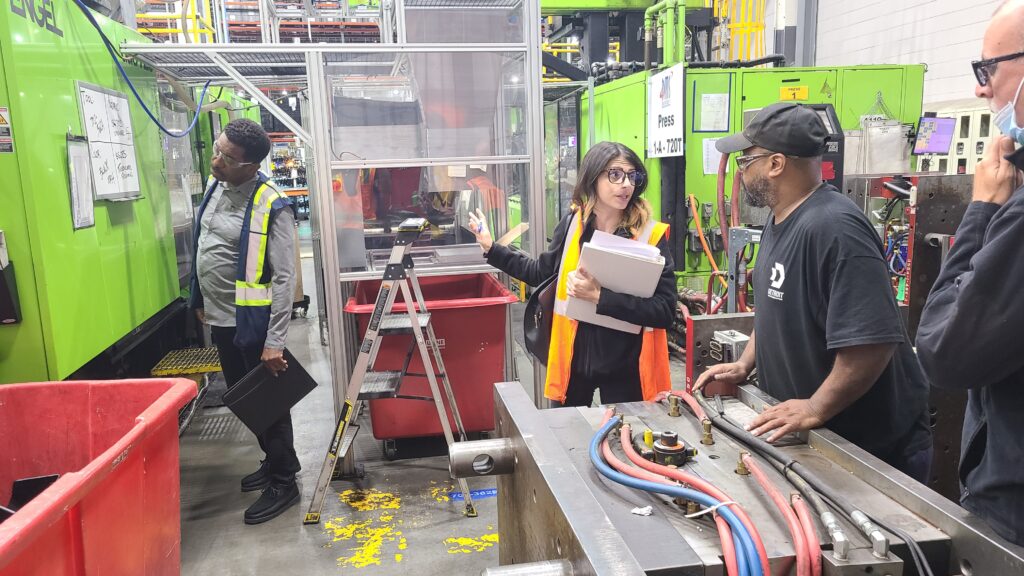
In 1995, after graduating from the College for Creative Studies with a degree in industrial and product design and an eye toward bettering the environment, Keith Zendler founded Environmental Services of North America Inc. in Detroit. Nearly thirty years later, the company retooled and relaunched to focus on waste management and upgraded its technology to help it expand and improve its services and expand its network of partners domestically and globally. We interviewed founder and owner Keith Zendler to learn more. Q: Tell us about RecycleMax. A: RecycleMax is a tech-based reboot of a company I founded in 1995. At that time, we had a plant in Detroit and a fleet of 14 trucks and we were focused mainly on paper and similar recyclables. We now provide the environmentally sound management of virtually all solid and liquid waste materials. I have always been interested in sustainability from a community standpoint – in building stronger and more sustainable communities through technology. So, I sold the original recycling company in 2008 and started a civic tech company focused on designing an online community network for people and organizations to better work together. Through this company, I launched a multisided SaaS platform with the intent of improving stakeholder communication, collaboration, and engagement to help leaders solve political, health, social, environmental, and economic issues. Eventually, I realized I could apply this technology to the recycling industry and provide businesses with robust and customized waste management programs that help them meet their sustainability goals and reduce their carbon footprint. So, RecycleMax was relaunched as a tech-based company in 2020. We use the same technology we offer clients internally for our operations. The crux of the platform is its ability to facilitate a community network and real-time communication. We have used it to build a global network of recyclers and haulers that we can leverage for clients. Q: How is the industry different now, than in the 1990s? A: There was a time when we had to push companies to recycle, and they would only do so if we could show that it either saved them money or at the very least did not incur additional expenses. That is no longer the driver. Companies are doing it now no matter what. That is a surprising shift. We work heavily in the auto industry, and I’ve been amazed at how progressive these companies are and how seriously the industry is taking environmental measures. Adding to that, until recently, most of our recyclables were shipped overseas, and we relied on China to handle them. A lot of waste was ending up in the ocean. China shut that off and it certainly caused a disruption, but ultimately it made the industry stronger. There are more and more companies being established in the U.S. to handle these materials. The industry has made a tremendous amount of progress, and it’s exciting. Q: Who are some of your customers in Detroit and Southeast Michigan? A: Union Tank Car Company, Detroit Manufacturing Systems, Fishbeck, and Piston Automotive to name a few. Q: In your experience, what are the challenges companies face with recycling? A: Education and incentivization. Employees often need to be trained in why and how to recycle and handle their waste materials. It’s also vitally important for individuals to understand the difference they are making. Providing that data offers motivation to continue the momentum toward success. Q: What are the biggest challenges you see that businesses have with waste management? A: Participation is probably the biggest challenge. Companies need all employees on board. Training and education are critical to a successful recycling program. There is still a lot of work to do in getting people to take recycling seriously. Plastic is another big challenge for the industry. There are types of plastics that are not commonly recycled due to the unique resins involved. It can become difficult for companies to manage this. Trucking and logistics are a challenge as well. Transportation costs can be the biggest component when it comes to recycling. Q: What are the biggest opportunities? A: I think there is a massive global opportunity in recycling. And by applying technology, the potential to streamline efficiencies is huge. I never thought I’d be in recycling for over thirty years, but It’s a wonderful industry. It feels good to be able to help businesses meet their recycling and waste management goals and do their part to better the environment. Be sure to subscribe to our newsletter for regular updates on sustainable business practices in and around Detroit.
New Detroit Director of Sustainability is Focused on Community
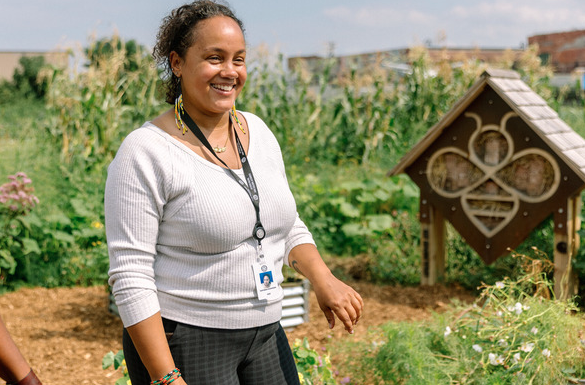
In March, Mayor Mike Duggan named longtime urban farming activist Tepfirah Rushdan as the city’s new director of sustainability. Rushdan was serving as Detroit’s first director of urban agriculture, where she worked to encourage urban farming by improving city policies and streamlining processes. Rushdan is helping lead the process of selecting a new director of urban agriculture, a position that will report to her. Rushdan also previously acted as codirector at Keep Growing Detroit, whose mission is for the majority of fruits and vegetables consumed by Detroiters to be grown in the city. She also is a co-founder of the Black Farmer Land Fund. She serves as treasurer of the Detroit People’s Food Co-op and is a cofounder of Black to the Land Coalition, which connects BIPOC people to outdoor recreation. She is also a board advisor to several other community projects and has formerly held seats at the Detroit Food Policy Council and the Uprooting Racism Planting Justice initiative. In her new role, Rushdan will lead the city’s priority actions within the four main goals of the Detroit climate strategy: Transitioning to clean energy Increasing sustainable mobility Accelerating energy efficiency and reducing waste Prioritizing vulnerable residents and adapting to change Reducing flood risks Protecting from extreme heat Improving air quality SBN Detroit interviewed Rushdan about her role, the challenges, and the opportunities. Q: How will you approach the four main goals of the Detroit climate strategy? A: The key for us to work across all departments within the city. There are some real champions in place who want to meet these goals and are already working to do so. My approach to tackling the four main goals involves fostering collaboration and synergy across all city departments. We are actively building out our capacity within my department to ensure that every arm of our municipal operations contributes to realizing our citywide sustainability vision. Q: You’ve said that you believe Detroit has real potential to become a national leader in municipal sustainability. What is your vision behind this? A: Being in Michigan, we have so many natural assets. Also, Detroit brings some things that may be seen as deficits, like vacant land and blighted areas, but I think these are big opportunities for us. It’s a chance to rethink what the city will look like in the coming years. Coming from an urban farming background, I’ve been thinking about the potential of this vacant land for many years, and I’m excited to find ways to repurpose it toward environmental goals – whether that’s farming, pollinators, solar, or other things. Also, Detroiters have grit. This is a city that’s been largely disinvested in, which has fostered strong resilience in our spirit. There is great potential here. Q: A major immediate focus is the city’s solar neighborhood project, which will replace up to 250 acres of vacant, blighted land in up to six neighborhoods with solar arrays that will create enough clean energy to power all of the city’s 127 municipal buildings. Can you tell us more about this project? A: This was largely driven by the people in the communities. The city put out a questionnaire regarding what the residents would like, and 19 groups responded saying they’d like to utilize the vacant land for projects. This city has met with them alongside other stakeholders and partners to determine what this might look like for the neighborhoods, the logistics of the sites, and so on. We currently have eight potential sites, and we are in meetings with the council to discuss moving forward with three of them for Phase One. We have selected two potential developers. The developers will work closely with the residents to lay out what the sites will look like in terms of design and aesthetics and work hand-in-hand with the neighborhoods. If all goes well with the city council, we’ll be able to start building as early as this fall. Q: What are the challenges of the project? A: I think there is a big opportunity to educate the public about climate change the issues that are at the forefront. It’s a chance to invest in the neighborhoods – communities that have not seen investment in years. This is a chance to spread that out. We’ll also be developing in the immediate areas around the footprints of the sites, investing in housing with energy upgrades, and more. So, I think it’s a chance for us to rise to the challenges of meeting the goals that the state of Michigan, the federal government, and the United Nations have outlined. This will take everyone working together including residents, businesses, and organizations. Q: Overall, do the city’s sustainability goals involve or play into workforce development? A: I’m proud of the work the city is doing around developing our workforce to be ready for the green economy. That’s pivotal. I want to highlight the Detroit At Work program where residents have opportunities to access careers and training. In fact, one of the new training options is around electric vehicle charging. The city is looking forward in terms of where the workforce needs to be and putting things in place for job creation toward these things. Q: What impact do you think your work will have on businesses and the economy? A: Sustainability is not exactly sexy. It takes a lot of work, commitment, and collaboration between businesses, residents, and all stakeholders. Business communities are driving our economy, so we need to be thinking about working alongside businesses to make sure their practices are sustainable. We all have to rethink how we are doing business and working together as a whole to reach our goals. Also, recently the city council unanimously passed the Energy and Water Benchmarking Ordinance requiring buildings with over 25,000 square feet of space to annually report their energy and water usage. This data will be gathered, and learnings and insights will be shared with other large business owners. Other cities have done this, and it’s been helpful. Q: What impacts are
